
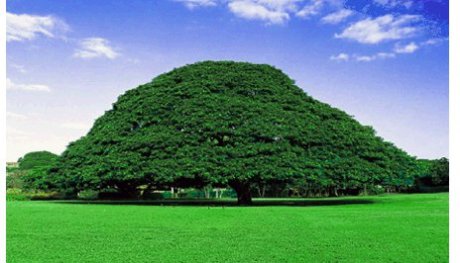


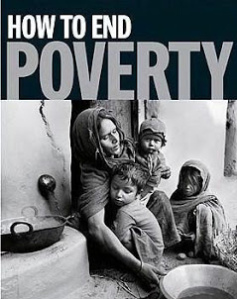
Exposing the great ‘poverty reduction’ lie
Jason Hickel* @ Aljazeera Opinion
The UN claims that its Millennium Development Campaign has reduced poverty globally, an assertion that is far from true.
The received wisdom comes to us from all directions: Poverty rates are declining and extreme poverty will soon be eradicated. The World Bank, the governments of wealthy countries, and – most importantly – the United Nations Millennium Campaign all agree on this narrative. Relax, they tell us. The world is getting better, thanks to the spread of free market capitalism and western aid. Development is working, and soon, one day in the very near future, poverty will be no more.
It is a comforting story, but unfortunately it is just not true. Poverty is not disappearing as quickly as they say. In fact, according to some measures, poverty has been getting significantly worse. If we are to be serious about eradicating poverty, we need to cut through the sugarcoating and face up to some hard facts.
False accounting
The most powerful expression of the poverty reduction narrative comes from the UN’s Millennium Campaign. Building on the Millennium Declaration of 2000, the Campaign’s main goal has been to reduce global poverty by half by 2015 – an objective that it proudly claims to have achieved ahead of schedule. But if we look beyond the celebratory rhetoric, it becomes clear that this assertion is deeply misleading.
The world’s governments first pledged to end extreme poverty during the World Food Summit in Rome in 1996. They committed to reducing the number of
undernourished people by half before 2015, which, given the population at the time, meant slashing the poverty headcount by 836 million. Many critics claimed that this goal was inadequate given that, with the right redistributive policies, extreme poverty could be ended much more quickly.
But instead of making the goals more robust, global leaders surreptitiously diluted it. Yale professor and development watchdog Thomas Pogge points out that when the Millennium Declaration was signed, the goal was rewritten as “Millennium Developmental Goal 1″ (MDG-1) and was altered to halve the proportion (as opposed to the absolute number) of the world’s people living on less than a dollar a day. By shifting the focus to income levels and switching from absolute numbers to proportional ones, the target became much easier to achieve. Given the rate of population growth, the new goal was effectively reduced by 167 million. And that was just the beginning.
After the UN General Assembly adopted MDG-1, the goal was diluted two more times. First, they changed it from halving the proportion of impoverished people in the world to halving the proportion of impoverished people in developing countries, thus taking advantage of an even faster-growing demographic denominator. Second, they moved the baseline of analysis from 2000 back to 1990, thus retroactively including all poverty reduction accomplished by China throughout the 1990s, due in no part whatsoever to the Millennium Campaign.
This statistical sleight-of-hand narrowed the target by a further 324 million. So what started as a goal to reduce the poverty headcount by 836 million has magically become only 345 million – less than half the original number. Having dramatically redefined the goal, the Millennium Campaign can claim that poverty has been halved when in fact it has not. The triumphalist narrative hailing the death of poverty rests on an illusion of deceitful accounting.
Poor numbers
But there’s more. Not only have the goalposts been moved, the definition of poverty itself has been massaged in a way that serves the poverty reduction narrative. What is considered the threshold for poverty – the “poverty line” – is normally calculated by each nation for itself, and is supposed to reflect what an average human adult needs to subsist. In 1990, Martin Ravallion, an Australian economist at the World Bank, noticed that the poverty lines of a group of the world’s poorest countries clustered around $1 per day. On Ravallion’s recommendation, the World Bank adopted this as the first-ever International Poverty Line (IPL).
But the IPL proved to be somewhat troublesome. Using this threshold, the World Bank announced in its 2000
annual report that “the absolute number of those living on $1 per day or less continues to increase. The worldwide total rose from 1.2 billion in 1987 to 1.5 billion today and, if recent trends persist, will reach 1.9 billion by 2015.” This was alarming news, especially because it suggested that the free-market reforms imposed by the World Bank and the IMF on Global South countries during the 1980s and 1990s in the name of “development” were actually making things worse.
This amounted to a PR nightmare for the World Bank. Not long after the report was released, however, their story changed dramatically and they announced the exact opposite news: While poverty had been increasing steadily for some two centuries, they said, the introduction of free-market policies had actually reduced the number of impoverished people by 400 million between 1981 and 2001.
This new story was possible because the Bank shifted the IPL from the original $1.02 (at 1985 PPP) to $1.08 (at 1993 PPP), which, given inflation, was lower in real terms. With this tiny change – a flick of an economist’s wrist – the world was magically getting better, and the Bank’s PR problem was instantly averted. This new IPL is the one that the Millennium Campaign chose to adopt.
The IPL was changed a second time in 2008, to $1.25 (at 2005 PPP). And once again the story improved overnight. The $1.08 IPL made it seem as though the poverty headcount had been reduced by 316 million people between 1990 and 2005. But the new IPL – even lower than the last, in real terms – inflated the number to 437 million, creating the illusion that an additional 121 million souls had been “saved” from the jaws of debilitating poverty. Not surprisingly, the Millennium Campaign adopted the new IPL, which allowed it to claim yet further chimerical gains.
A more honest view of poverty
We need to seriously rethink these poverty metrics. The dollar-a-day IPL is based on the national poverty lines of the 15 poorest countries, but these lines provide a poor foundation given that many are set by bureaucrats with very little data. More importantly, they tell us nothing about what poverty is like in wealthier countries. A 1990 survey in Sri Lanka found that 35 percent of the population fell under the national poverty line. But the World Bank, using the IPL, reported only 4 percent in the same year. In other words, the IPL makes poverty seem much less serious than it actually is.
The present IPL theoretically reflects what $1.25 could buy in the United States in 2005. But people who live in the US know it is impossible to survive on this amount. The prospect is laughable. In fact, the US government itself calculatedthat in 2005 the average person needed at least $4.50 per day simply to meet minimum nutritional requirements. The same story can be told in many other countries, where a dollar a day is inadequate for human existence. In India, for example, children living just above the IPL still have a 60 percent chance of being malnourished.
According to Peter Edwards of Newcastle University, if people are to achieve normal life expectancy, they need roughly double the current IPL, or a minimum of $2.50 per day. But adopting this higher standard would seriously undermine the poverty reduction narrative. An IPL of $2.50 shows a poverty headcount of around 3.1 billion, almost triple what the World Bank and the Millennium Campaign would have us believe. It also shows that poverty is getting worse, not better, with nearly 353 million more people impoverished today than in 1981. With China taken out of the equation, that number shoots up to 852 million.
Some economists go further and advocate for an IPL of $5 or even $10 – the upper boundary suggested by the World Bank. At this standard, we see that some 5.1 billion people – nearly 80 percent of the world’s population – are living in poverty today. And the number is rising.
These more accurate parameters suggest that the story of global poverty is much worse than the spin doctored versions we are accustomed to hearing. The $1.25 threshold is absurdly low, but it remains in favour because it is the only baseline that shows any progress in the fight against poverty, and therefore justifies the present economic order. Every other line tells the opposite story. In fact, even the $1.25 line shows that, without factoring China, the poverty headcount is worsening, with 108 million people added to the ranks of the poor since 1981. All of this calls the triumphalist narrative into question.
A call for change
This is a pressing concern; the UN is currently negotiating the new Sustainable Development Goals that will replace the Millennium Campaign in 2015, and they are set to use the same dishonest poverty metrics as before. They will leverage the “poverty reduction” story to argue for business as usual: stick with the status quo and things will keep getting better. We need to demand more. If the Sustainable Development Goals are to have any real value, they need to begin with a more honest poverty line – at least $2.50 per day – and instate rules to preclude the kind of deceit that the World Bank and the Millennium Campaign have practised to date.
Eradicating poverty in this more meaningful sense will require more than just using aid to tinker around the edges of the problem. It will require changing the rules of the global economy to make it fairer for the world’s majority. Rich country governments will resist such changes with all their might. But epic problems require courageous solutions, and, with 2015 fast approaching, the moment to act is now. Read more @original source http://www.aljazeera.com/indepth/opinion/2014/08/exposing-great-poverty-reductio-201481211590729809.html
*Dr Jason Hickel lectures at the London School of Economics and serves as an adviser to /The Rules.

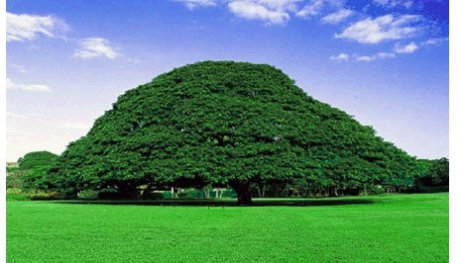


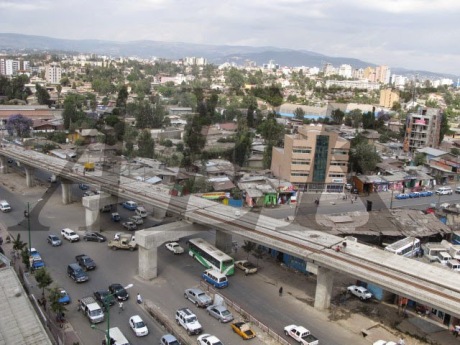
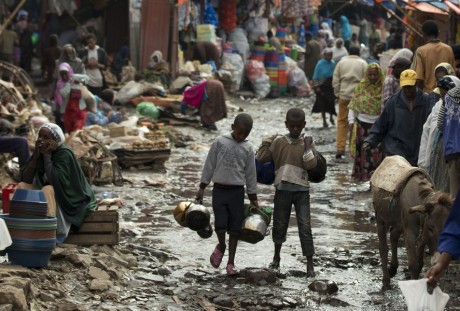


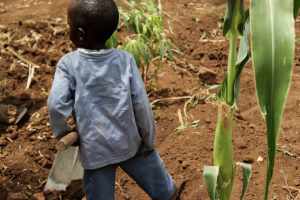






 Working Group Must Address Trade Misinvoicing and Role of U.S. Business and Government in Facilitating Illicit Finance to Be Truly Effective, Warns GFI
Working Group Must Address Trade Misinvoicing and Role of U.S. Business and Government in Facilitating Illicit Finance to Be Truly Effective, Warns GFI





